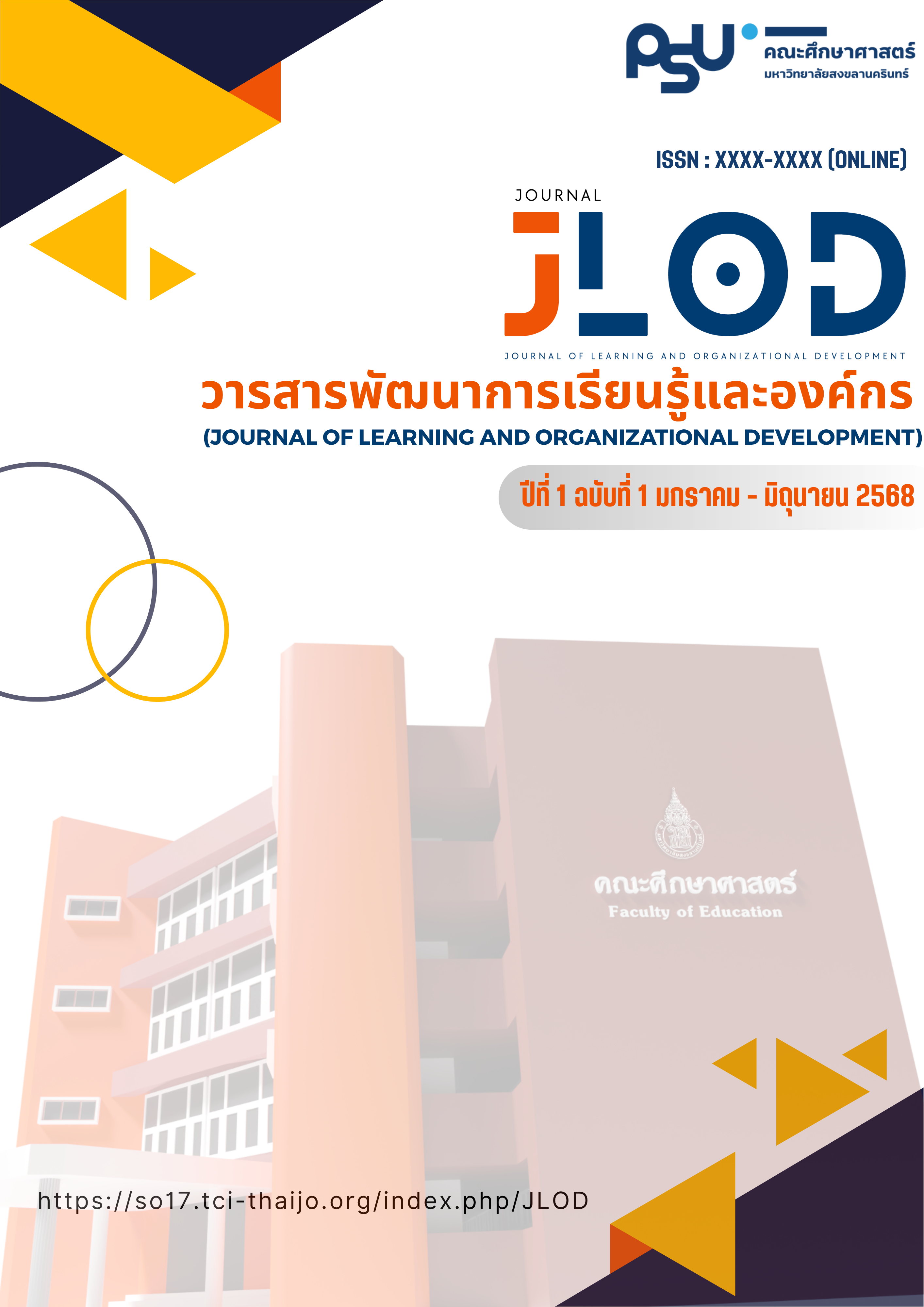The Results of the Learning Management Using STEM Activities on the Factors Affecting the Rate of Chemical Reactions to Promote the Chemistry Concepts Grade 11 Students at PSU Demonstration School (Secondary)
Keywords:
STEM-based learning activities, Chemistry concepts, Satisfaction with the learning processAbstract
This research aimed to: 1) compare students’ academic achievement before and after learning through STEM-based activities 2) compare students’ chemistry conceptions before and after learning through STEM-based activities and 3) investigate the satisfaction level of Grade 11 students at the PSU Demonstration School (Secondary) regarding the implementation of STEM-based learning activities. The sample consisted of 35 Grade 11 students from the Health Science Classroom Group 4. The research instruments included a STEM-based learning management plan, a test on factors affecting the rate of chemical reactions, a chemistry concept assessment, and a satisfaction questionnaire. The study employed a one-group pretest-posttest design. Data were analyzed using mean, standard deviation, and paired-sample t-tests.
The results showed that students who participated in STEM-based learning activities had significantly higher post-learning academic achievement and chemistry conceptions than before learning (**p < 0.05). Additionally, students’ overall satisfaction with STEM-based learning activities was at the highest level.
References
Becker, K. H., & Park, K. (2011). Effects of STEM integration on high school students' learning and interest in science and technology. International Journal of Science and Mathematics Education, 9(6), 1105–1124.
Bybee, R. W. (2013). The case for STEM education: Challenges and opportunities. National Science Teachers Association.
Gabel, D. (1999). Improving teaching and learning through chemistry education research: A look to the future. Journal of Chemical Education, 76(4), 548.
Johnstone, A. H. (2010). You can't get there from here. Journal of Chemical Education, 87(1), 22-29.
Jolly, A. (2014). Six characteristics of a great STEM lesson. Education Week.
Kelley, T. R., & Knowles, J. G. (2016). A conceptual framework for integrated STEM education. International Journal of STEM Education, 3, 11.
Khamchu, N., Jittangprasert, P. & Dornbundit, P. (2019). A Comparison on the Results of the Development of Chemical Conception on Solutions Using STEM Education Learning Management andInquiry-Based Learning for Tenth Grade. Rangsit University National Research Conference 2019, Thailand. [in Thai]
Khonsoong, N. (2017). Development of STEM Activity in Chemistry on Factors Affecting the Rate of Chemical Reactions to Enhance Chemistry Concepts and Twenty-First-Century Skills for the High School Level. [Master of education thesis, Srinakharinwirot University.[in Thai]
Krajcik, J., & Delen, I. (2017). Engaging learners in STEM education. Eesti Haridusteaduste Ajakiri, 5(1), 35–58.
Nakhleh, M. B. (1992). Why some students don't learn chemistry: Chemical misconceptions. Journal of Chemical Education, 69(3), 191 196.
Özmen, H. (2004). Some student misconceptions in chemistry: A literature review of chemical bonding. Journal of Science Education and Technology, 41(3), 298-314.
Salaeh, N., Mophan, N. & Waedramae, M. (2017). Effect of STEM Education on Chemistry Achievement, Analytical Thinking Ability and Instructional Satisfaction of Grade 10 Students. Princess of Naradhiwas University Journal of Humanities and Social Sciences, 4(1), 42–53. [in Thai]
Taber, K. S., & Cole, R. (2019). Chemistry education: Best practices, opportunities, and trends. Royal Society of Chemistry Publishing.
Tsaparlis, G., & Angelopoulos, V. (2000). Conceptual versus algorithmic learning in high school chemistry: The case of basic quantum chemical concepts. Chemistry Education Research and Practice, 1(1), 33-50.
Downloads
Published
How to Cite
Issue
Section
License
Copyright (c) 2025 Journal of Learning and Organization Development

This work is licensed under a Creative Commons Attribution-NonCommercial-NoDerivatives 4.0 International License.






